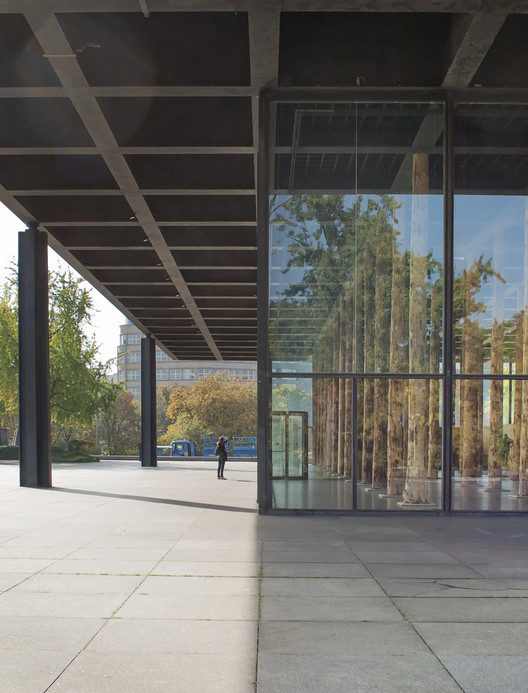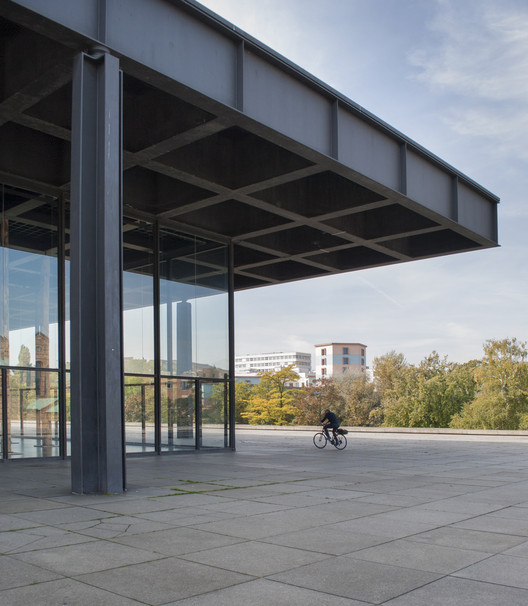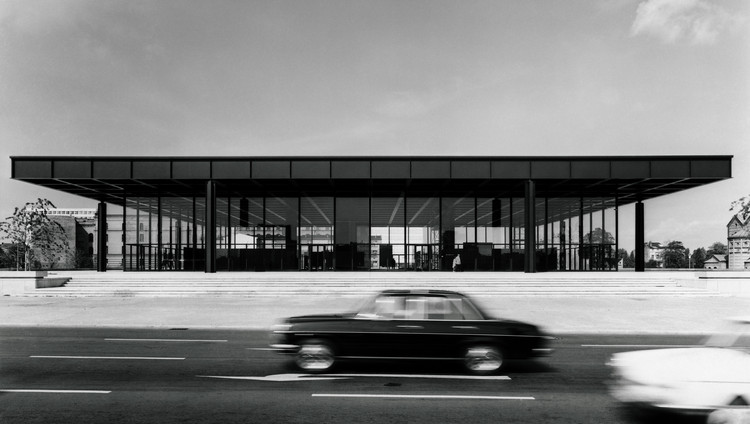
In Berlin, Mies van der Rohe’s Neue Nationalgalerie has begun a new phase today with the opening of David Chipperfield’s intervention, a prologue to the imminent restoration which the famed British architect is about to undertake. Completed in 1968, the gallery was Mies’ last project and his final masterpiece; for nearly fifty years, nobody dared to touch it - until now. Marking this event is a large, site-specific installation, created by Chipperfield as an attempt to engage Mies in a spatial experiment (or perhaps a last, apologetic tribute to the 20th-century master) moments before he is about to embark on a mission which will, inevitably, transform Mies’ ultimate legacy.

“While modern architecture is often criticised for forgetting history and the inherent qualities of architecture, I think that Mies never did. This is his testament.” Stated Chipperfield at a press conference held yesterday at the Gallery’s main hall, a splendid 2,500 square meter glass-encased space, topped by a massive steel plate supported by eight exterior columns, thus releasing the interior space from any load-bearing elements; Mies’ perfect execution of a flexible floorplan. “We immediately felt that if we do an exhibition about architecture in the ‘Mies Room’, Mies has to be the architecture that you start with,” continues Chipperfield. “You have to engage the room, not as a shelter for the exhibition, but as the stage, or, in a way - the protagonist.”

The installation, titled "Sticks and Stones", is composed of 144 tree trunks, each eight metres tall, perfectly aligned with the ceiling's strict symmetrical grid and stretching down to the dark, reflective granite floor. “I think it is very interesting how the regularity of the placement of the trees makes the architecture,” explains Chipperfield. “There is nothing more complex or more simple than to arrange 144 columns in the most beautiful room in Berlin, and wait to see what it does, spatially (...) you see different symmetries, different spaces; you create rooms and vistas, and in a way that’s what architecture is: it’s nothing more than the arrangement of structure, walls, enclosure, view, shelter and material.”

Explaining his paradoxical act of introducing columns into a celebrated column-free space, Chipperfield says: “The column is a sort of lost child of modern architecture (...) We don’t really need columns any more. You can span fifty meters without columns, as this space shows us. Columns used to carry language, to create space, so in some ways we wanted to make a tribute to the lost qualities of the column.”

The exhibition’s double-meaning title refers both to architecture’s material traditions, as well as to its meaning: By referring to the British children’s rhyme “Sticks and stones may break my bones, but words will never hurt me,” Chipperfield claims the inherent power of architecture is far beyond words: “In a way [the title] reinforces the idea that the physical is more important than the written or the spoken, which we, as architects, have to believe in.”

When the three months exhibition ends, the woods will be dismantled and the real intervention will begin: a three year renovation and complete refurbishment of the both the gallery and its original furniture, as well as the addition of a cloakroom, a shop and a cafe.

Will Chipperfield fulfill his mission to restore Mies’ final legacy without harming its perfectionist composition and precision? In a highly appropriate paraphrasing of Mies’ “less is more” architectural motto, Chipperfield concluded:
“When trying to do something more, we often do much less, and that is, for me, the testament of this building. It is a flawed building in many ways, but its architectural qualities protected it. In some ways, it has never worked; this room has always been a problem. But we love it for what it is, because it endeared itself, not through its narrative or functionality, but because it stayed close to what architecture can do.”
The exhibition opens tomorrow, October 2nd, and will run until December 31st, 2014.

















